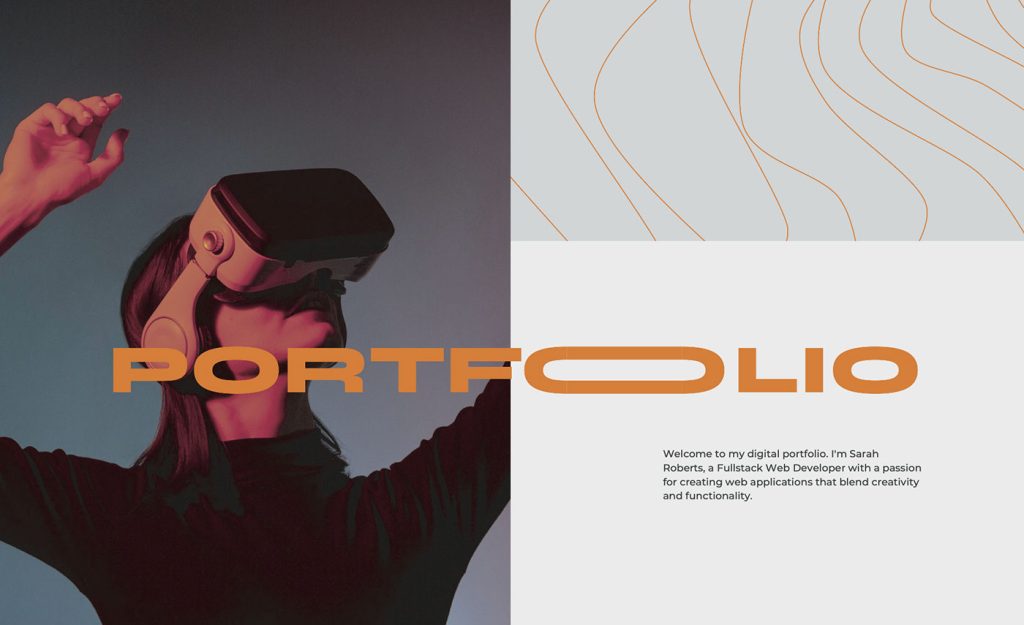Pitching is a toxic and addictive habit that sucks up valuable resources and ultimately demeans both you and the work you do.
In the creative industries, pitching is understood to be the most commonly accepted way in which clients choose suppliers. And thus ‘the art of the pitch’ has become a critical way for design companies (and freelancers) to win clients, either for specific projects, or as a retained agency.
Given that a successful pitch can lead to work resulting in many thousands of dollars of billable work, it’s no surprise that agencies invited to pitch will put a huge amount of effort into creating pitch materials, including a lengthy written proposal—often with a full cost breakdown—and lavish presentation material showing spec work.
The pitch presentation itself becomes a piece of theatre, with a senior creative outlining his vision for the client, seeking an emotional response, followed by the big reveal of the concept and the visuals—whether boards, a video or screens. Think of Don Draper in Mad Men, reducing the room to tears with the reveal of the Kodak Carousel, tapping into the sense of our most personal memories. “It’s not a spaceship, it’s a time machine.” It’s the drama, the magic, that makes pitching so seductive and so appealing.
Pitching brings huge highs and lows. For the winning pitch, the elation is short lived to be replaced with the actual task of delivering on the huge over-promises made in the heat of the moment. The losing teams are faced with counting the cost of the blow to morale, and the production resources burned.
I used to love pitching, and had a good success rate when I had a good inside knowledge of what the client was looking for. But pitching was taking a lot of time away from regular work. I realised I was often putting my best efforts into pitches for prospective clients rather than the actual work for my current clients. And for web design briefs, I found I was pitching for smaller and smaller projects.
Like any high, pitching is addictive, and having won one, you want to win more, to get that next fix. But it is a toxic habit, with some serious drawbacks.
What’s wrong with pitching?
1. Creating solutions before understanding the problem
The urge to show some creative ideas in the pitch leads us to start coming up with design solutions without having the chance to fully understand the client’s requirements, other than the vagaries of the brief. There’s almost certainly no opportunity to conduct research with users or other stakeholders.
Imagine a doctor prescribing a treatment based on a patient’s self-assessment, and you get an idea of the absurdity of trying to create a design solution without really analysing the client’s needs.
Showing creative work in a pitch inevitably skews the role of the designer to that of a visual stylist, rather than that of a consultant. Clients need someone who can truly understand the design issues they face, and come up with a bespoke solution, not just some pretty mock-ups. But pitches only showcase the superficial.
2. You give your ideas away for free
Creating pitch materials invariably means starting to do the work before you have been commissioned. I think this is the real addiction of pitching for designers—we are drawn to something new, a problem to be solved. Design addicts, we just can’t help ourselves.
But this willingness to work for nothing, makes the work less valuable to the client. Clients end up believing ideas are cheap, and design thinking not something that has value. Even if you win the pitch, it makes it hard to bill a decent amount for this stage of work.
3. Pitching is never a level playing field
No pitch is ever a fair fight. I’ve learnt this to both my advantage and disadvantage over the years. There are a number of ways in which the game may be rigged:
a. The inside track: the client has an agency they want to use, but they are going through the motions to appear that they have selected the winning agency on merit. There can be any number of reasons why the pitch is a sham. It might be because the client has used that agency before, and wants to use them again. Maybe someone at the client company wants to give it to his or her friend, but doesn’t want to appear to be playing favourites.
b. The inside scoop: some of the agencies pitching may be privy to information not shared on the brief. They may have discovered this information by having contacts on the inside, or they may just have contacted the client and asked them. Sometimes clients share all information requested, but not always. Budgets are often a case of secret knowledge, frequently inexplicably undeclared on the brief. Certain IT requirements are another one—I once lost a pitch because we didn’t propose to use JavaBeans and that happened to be the technology du jour the Head of IT was fixated upon—unmentioned in the brief and not relevant to the project.
There will always be someone on the client review panel with a secret agenda.
4. Pitching is expensive
Preparing for pitches takes time, which means it costs money. From analysing the brief, to brainstorming, to ideation, to creative execution; it all requires a creative team to work on the pitch as if it is a live project. Then there are the expenses—repro costs, taxis, equipment hire, even overnight hotel rooms if it means arriving at the pitch fresh.
It’s not unheard of for agencies to spend as much as 1/3 of the project sum available at the pitch stage, a totally unsustainable business practice (unless you are winning a huge percentage of pitches). Pitching is wasteful to the industry as a whole, and represents wealth destruction to the larger economy.
5. It skews the client-supplier relationship
Pitch presentations are performances, and this turns the client into the audience. Pitching brings out the tap-dancing showman in us, over-eager to please, and not willing to spoil the mood by telling the client uncomfortable truths.
A theatrical dynamic between the client as judge and the supplier as auditioning talent is not conducive to exploring design excellence together. Even once a pitch is won the urge to perform continues with each presentation. Collaboration is the way that good design happens, but this cannot happen when the designer is always holding ideas back, to be be revealed with a flourish, and the client responds with a nod of approval or a gasp of horror.
Paid to pitch?
Sometimes you will find that all parties presenting will receive a pitch fee, to help cover their time of creating the pitch materials, However, this fee generally does not cover the cost of time and materials needed to create an effective pitch, and of course, does not resolve the biggest problem: of prescribing before diagnosing.
One additional aspect of a paid pitch is that, having paid a small amount, the client may believe it has some greater entitlement to use your ideas, even if you are not awarded the final contract.
Life’s a pitch?
It is easy to argue that life is a series of putting yourself out there and asking people to choose you, whether this is in love and relationships, buying a house, as well as work and careers. The question is to find a balance between the amount of effort you are prepared to put in, with no commitment from the other party.
The no pitch approach
The only way to get off the addictive habit of pitching is to go cold turkey, and just say no. Saying no to pitching may initially lose you client opportunities, but it may also open up better ones.
Being a no pitch agency or freelancer instantly makes you different from 95% of your competitors, to zig when everyone else zags. It marks you out as confident in your abilities, and crucially, it gives you a chance to explain to a prospective client why you don’t pitch. This can open up a channel of communication with a prospect that could be more fruitful instead. You will need to educate clients why pitches are non-productive for them as well—you may be able to convince a client to go with you and skip the pitch stage entirely. After all as Don Draper says: “If you don’t like what is being said, change the conversation.”
Being an agency or freelancer with a ‘no pitch’ mantra takes courage and commitment, and requires a different way of acquiring clients. In future, client selection will be based on your portfolio, and the ability to demonstrate your capabilities and creativity, and how this can be applied to the client’s work, without doing any work ahead of being commissioned.
Here are three cornerstones of being a no pitch agency or freelancer:
1. No spec work…ever
You won’t start to create until you understand the client’s requirements. Which means them commissioning you, even if just for an exploratory piece of work.
One of the biggest problems with pitches is that it feeds our desire to do creative work, and avoid a bigger issue, which is making sure the client is willing to pay for it. Refusing to pitch, or do spec work, inevitably means that the question of money comes up sooner, and ultimately this is best for both companies.
2. No competitive pitches…ever
You don’t go up against any other agency to present ideas. Withdrawing when faced with a pitch situation sends a powerful message.
It’s up to you whether you are happy with a ‘beauty parade’ type situation where you and other agencies are expected to present just credentials. My experience is that these types of presentations still cast the supplier as a performer and the client as a judge. Someone inevitably shows up with a few mock-up boards done specifically for the client and before you know it the client’s head is turned.
It’s important to explain to clients why pitches are bad for them too, and that ultimately it doesn’t lead to great work.
You should always aim to be turning presentations into conversations, exploring if there is a fit between your capabilities and the clients requirements.
3. No showmanship
Once you have weaned yourself of the adrenaline rush of the big reveal in the pitch, it’s time to back away from turning interim presentations into mini-pitches. You should not be aiming to surprise you clients in an interim with work they haven’t seen before, or were not expecting. Presentations should not be performances, they should be about reviewing the work to date to ensure the objectives are being met. Aim to turn interims into low-key client reviews and sign-offs rather than showcase performances.
For technical creative tasks such as web sites or apps, saving a live demo for a big reveal is especially risky, as any technical hitches can instantly halt the momentum of a presentation. Far better to put the content on a development server, or seed an early alpha version, that members of the client team can access before the meeting, along with details of the limitations of what you have built.
A different way of working
Taking a decision not to pitch for work requires a fairly major rethink to how you gain clients, and thus how you define what it is you do. To assist you in positioning yourself, and dealing with potential clients used to getting suppliers to jump through hoops, I thoroughly recommend The Win Without Pitching Manifesto, by Blair Enns.
A central thesis of Enns’ manifesto is that companies that have to pitch to win work have not done enough to establish their specialist expertise, to make them the automatic candidate for the work. It’s a great read but one that will force you to make some tough decisions about how you view your skills and expertise.
Featured image/thumbnail, still from Mad Men via TomR35






